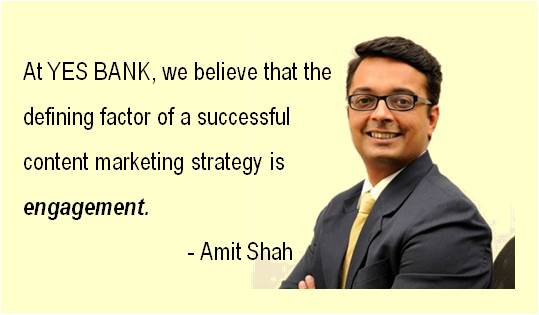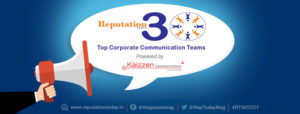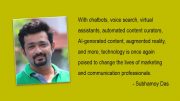We’re at a point in the marketing strategy and technology industry when marketing budgets are at an all-time high. It has become imperative to look beyond sales and take in the much bigger picture of a continued investment and innovation in the field of Marketing. As a result, we have seen new marketing strategies take shape over the past few years to keep pace with changing mindsets, media consumption patterns and evolved audience choices.
The perennial question, however, that seems to always be on a marketer’s mind is whether to run with a left brained, or a right brained marketing strategy – and which of the two would be a best fit to maximise value? A left-brained strategy, which underlines the use of statistics and examples to outdo competition with focused communication such as advertising a ‘Sale’ as a time when a customer is likely to ‘save’ the most. Or, a well-designed story telling experience with emotional appeal of the right-brained marketing approach.
I feel the answer is not black and white; tailor-made strategies, rather than a ‘one size fits all’ approach will be the best way forward. It is against this backdrop that we have seen the evolution of content marketing – the present, and I daresay, the future of marketing.
From digital to social to mobile and everything in between, content marketing has become ubiquitous, whether the goal is to inform and educate consumers, ignite passion amongst fans, drive action, or simply delight audiences with an immersive brand experience.
The question that arises next is, how does one make an effective content marketing strategy, and how does it play in to a company’s existing scheme of affairs?
- As is the case with any marketing strategy, it will be defining and understanding the Core Audience. This knowledge will form the fulcrum of the entire strategy and it will provide answers to the critical questions of who the target is, what their interests are and why they will be interested in what you have to offer. It’s important to ensure that companies are speaking in the same language, tone and medium of its target audience as this is the first step of reaching out to your prospective clients.
- It is important to map the content to the business or brand cycle. As a marketer, it is important to create content to meet the needs of your prospects at relevant stages to help them move to the next stage.
- Arguably the most important component of the cycle is Creation of the Content. Ideally, the core messaging of a brand should be the cornerstone of all its efforts in its content marketing strategy. This is the portion that will require the most productivity, creativity and time.
As media preferences of consumers diversify further, it is important to create content that is customisable to make it relevant across various formats like blogs, videos, infographics etc. Needless to say, it’s important to focus on dynamics of the content – the content needs to be short, crisp and incisive with one or two clear takeaways.
At YES BANK, we believe that the defining factor of a successful content marketing strategy is engagement. Though engagement is central to online and offline best practices for a brand, marketers often tend to miss out on other constructs to assess consumer experience. We did not want to make the same mistake.
The YES BANK CFO Forum Showcase Page on LinkedIn is one such example. We created the page with the objective of creating an online community of CFOs across the globe to hold discussions on current issues and day-to-day workings of their teams/organisations. The page has an offline avatar – in the form of multi city meet & greets for CFOs to network at, annual Awards recognising top performing CFOs, a CFO-focused monthly magazine and a content based microsite – all of which help create a personal connect with CFOs. The Most Promising Future CFOs award campaign on LinkedIn, is housed under this particular community-driven initiative. The campaign has outperformed LinkedIn’s benchmarks by 3X times. We were able to reach out to 3.6k senior finance professionals & CFOs for nominations of the Award using InMails resulting in more than 50% open rates & 10% CTRs.
An effective content marketing strategy incorporates a range of tactics, including Media Outreach, Search Engine Optimisation, Website Optimisation and Social Media/email Marketing. And last but not least, measuring and analysing the entire process is important to ensure that firms learn what’s working and what isn’t.
Exponents of content marketing must strive to evolve an environment where each piece of content can be evaluated not subjectively, but objectively on its potential revenue contribution to the organisation – at the end of the day, the world of marketing may have transformed, but basic principles like Return on Investment, continue to rule the roost!
This article is part of series written by team leaders or professionals from the 30 Top Corporate Communication Teams powered by Kaizzen Communications.







Be the first to comment on "Content marketing: Making organisations future ready"